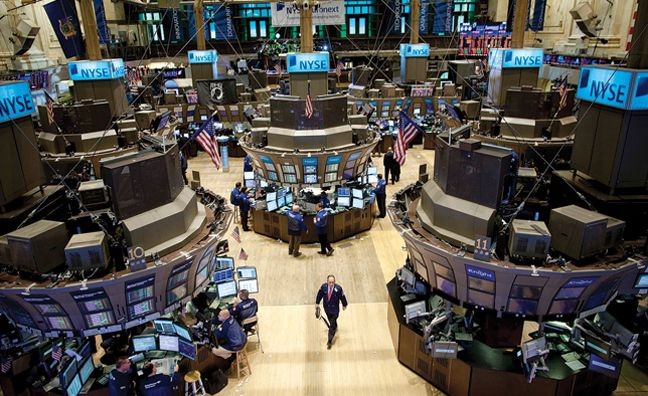Why do they still have floor traders at the NYSE
Post on: 10 Июль, 2015 No Comment

Listener John Wang, who dabbles in a little online trading, wrote in to ask this:
“I’ve always wondered why there are still people on the floor of the New York Stock Exchange. It always seems kind of strange that they’re there, now that we have computers and networks for doing all sorts of trades.”
Most of us have a mental picture of floor traders at the stock market – men in blue jackets, shouting at each other, waving bits of paper, gesturing wildly with hand signals.
“Even though it looks chaotic to people, it’s actually very crystal clear what was going on to the people down on the floor,” says Johanna Lee, director of a documentary film called The Pit, about a group of floor brokers at the New York Board of Trade.
The guys in her movie dealt in coffee futures. And they used to do something called open outcry, setting the price right then and there in an open pit.
Lee made the film at an interesting time, back in 2011, just as the New York Board of trade – like almost every other exchange – was going electronic.
So what’s it like on Wall Street now?
I went to find out at the New York Stock Exchange: the grand stage of American capital markets. It has an impressive carved stone ceiling, in which you can see the nearly 200 years of history – which is totally at odds with the rows of computer screens that line every single booth in the hall.
On the floor, traders in their blue jackets are everywhere.
“I spent my whole career in this building,” says Kenny Polcari, a trader for O’Neill Securities who represents an institutional investor. “For me it’s really all I know.”
Polcari, a fast-talker with a big laugh and sense of humor, says things work very differently today from when he first started out in this job 30 years ago.
“Today it’s defined by technology. It’s defined by high-speed computers that take the emotion out of investing. Some say it’s good. I, on the other hand… Listen, part of what investing was about was the emotion. You come down here 25 or 30 years ago, the emotion blew the roof off the building every single day. It was just so exciting.”
But here’s the thing — for all the excitement and history and prestige, the NYSE actually handles a tiny amount of the overall volume of trades in the U.S.
So who does the rest of the trading? Robots.
“Robots now do anywhere between 50 and 75 percent of the trades in the United States,” says Bob Ivry, who works for Bloomberg News and wrote a book called The Seven Sins of Wall Street .
Ivry says the real action takes place in a high-security warehouse in a small town in New Jersey. That’s where you’ll find computers trading at lightning speed. They’re also cheaper and more efficient than humans.
Hooray for robots, right? Not quite.
“They are there when the going is good,” says Ivry. “The minute the prices start plummeting, for any reason, what the robots do is they run for the hills. They’re nowhere to be seen when that stock is going down.”
Computers have been known to cause a flash crash – where prices tumble uncontrollably, causing a lot of damage. But the reality is, automated trading has taken over.
So does that make traders like Kenny Polcari an endangered species?
Polcari believes there is still a role for human judgement in the system, especially when the market is fragmented. “You almost have to develop a sixth sense, you have to be able to feel the liquidity,” he says. “Today brokers use that sixth sense to try and assess supply and demand in a fractured market structure. And I think that’s part of the challenge but that’s also part of the key, that’s how you’re able to represent customers.”
“As far as the nuts and bolts of trading are concerned, they’re already gone,” says Ivry. “If you consider there’s some theatre involved – and I do – then they have a specific and necessary function. They put a face to the battle of the robots. All those traders down there in their blue smocks and their pins – they put a face on trading, on American capitalism.”
Ivry says we need a narrative to tell us how to invest our money in a way that will help communities. Trading algorithms are “a brutal and souless way of allocating capital,” he says.
Back at the New York Stock Exchange, it’s a good thing trader Kenny Polcari is a “Type A” personality.
“I think that’s fair,” Polcari says with a hearty laugh. “I love being the face of Wall Street.”














